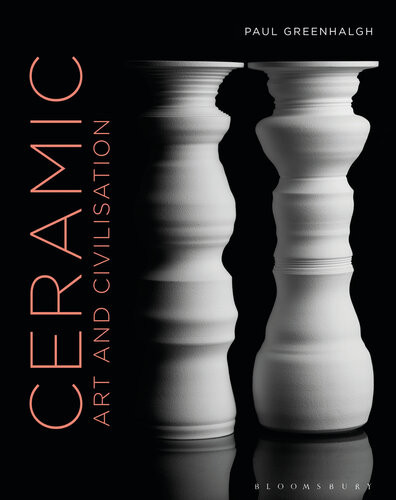

Most ebook files are in PDF format, so you can easily read them using various software such as Foxit Reader or directly on the Google Chrome browser.
Some ebook files are released by publishers in other formats such as .awz, .mobi, .epub, .fb2, etc. You may need to install specific software to read these formats on mobile/PC, such as Calibre.
Please read the tutorial at this link: https://ebookbell.com/faq
We offer FREE conversion to the popular formats you request; however, this may take some time. Therefore, right after payment, please email us, and we will try to provide the service as quickly as possible.
For some exceptional file formats or broken links (if any), please refrain from opening any disputes. Instead, email us first, and we will try to assist within a maximum of 6 hours.
EbookBell Team

4.8
64 reviewsIn his major new history, Paul Greenhalgh tells the story of ceramics as a story of human civilisation, from the Ancient Greeks to the present day. As a core craft technology, pottery has underpinned domesticity, business, religion, recreation, architecture, and art for millenia. Indeed, the history of ceramics parallels the development of human society.
This fascinating and very human history traces the story of ceramic art and industry from the Ancient Greeks to the Romans and the medieval world; Islamic ceramic cultures and their influence on the Italian Renaissance; Chinese and European porcelain production; modernity and Art Nouveau; the rise of the studio potter, Art Deco, International Style and Mid-Century Modern, and finally, the contemporary explosion of ceramic making and the postmodern potter. Interwoven in this journey through time and place is the story of the pots themselves, the culture of the ceramics, and their character and meaning. Ceramics have had a presence in virtually every country and historical period, and have worked as a commodity servicing every social class. They are omnipresent: a ubiquitous art. Ceramic culture is a clear, unique, definable thing, and has an internal logic that holds it together through millennia. Hence ceramics is the most peculiar and extraordinary of all the arts. At once cheap, expensive, elite, plebian, high-tech, low-tech, exotic, eccentric, comic, tragic, spiritual, and secular, it has revealed itself to be as fluid as the mud it is made from.
Ceramics are the very stuff of how civilized life was, and is, led. This then is the story of human society's most surprising core causes and effects.